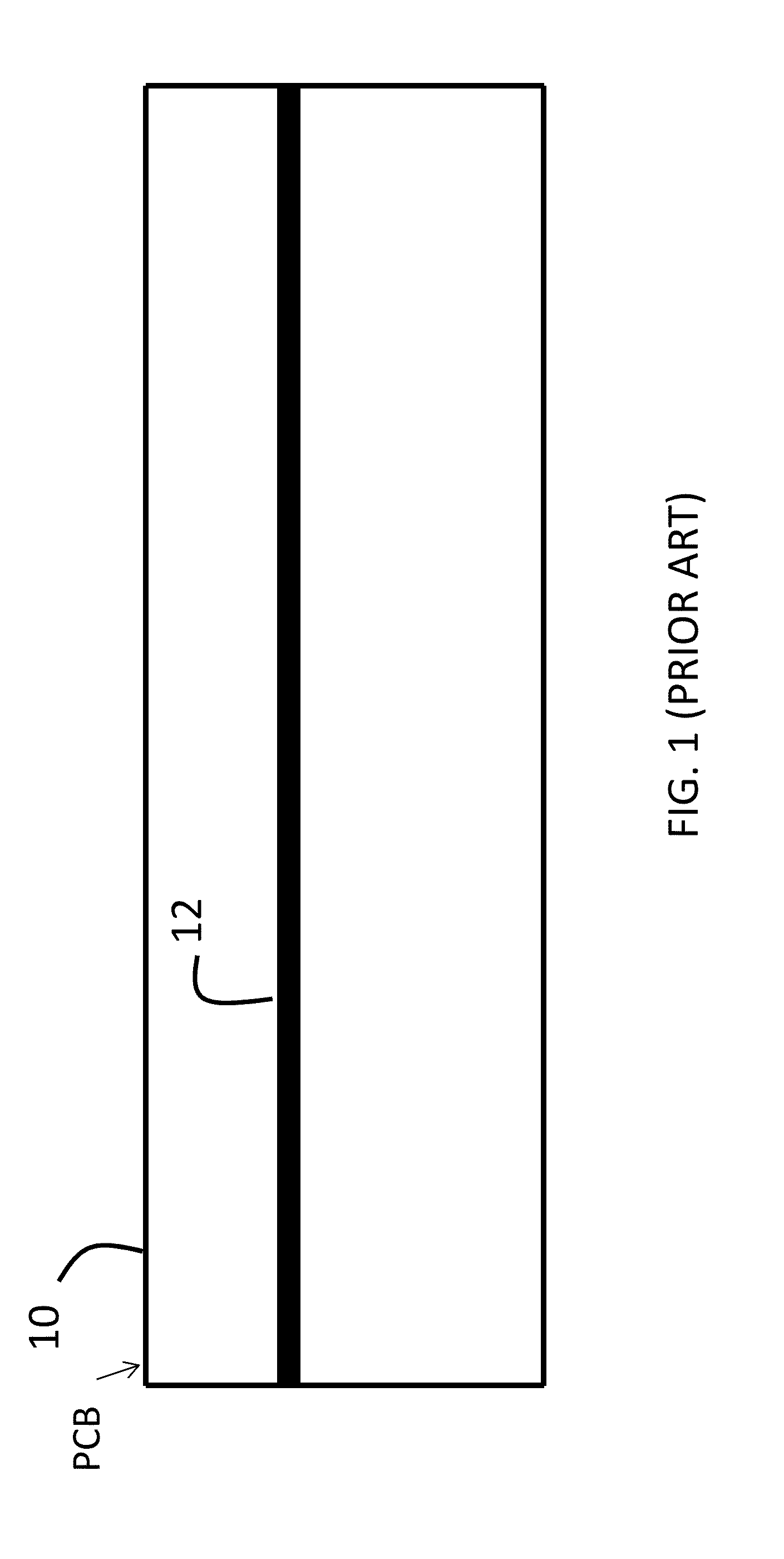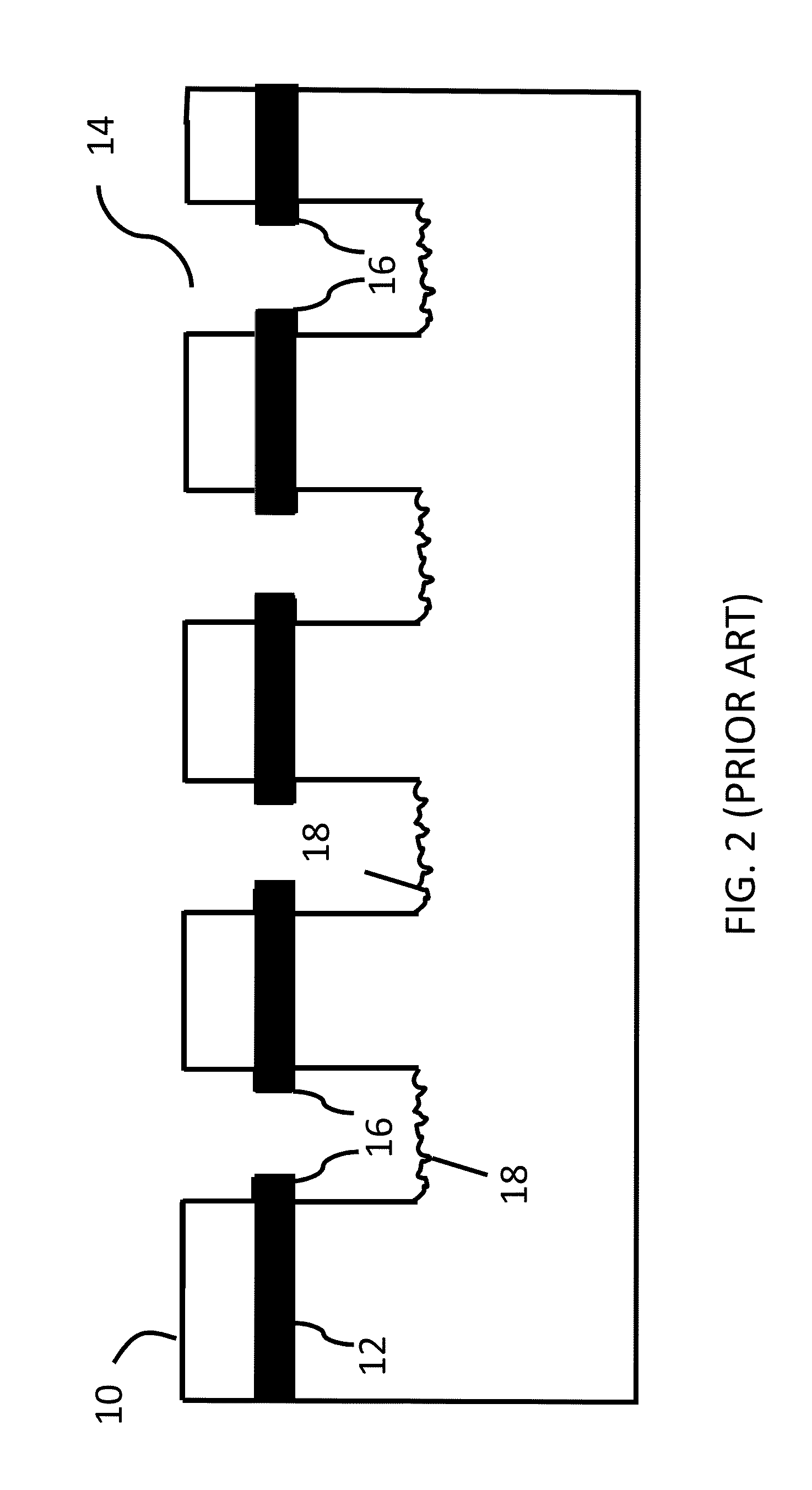Signal sectioning for profiling printed-circuit-bord vias with vertical scanning interferometry
- Summary
- Abstract
- Description
- Claims
- Application Information
AI Technical Summary
Benefits of technology
Problems solved by technology
Method used
Image
Examples
Embodiment Construction
[0029]As used herein, the term “shelf” refers to the substantially annular structure of reinforcing fibers produced by the process of forming a via in a printed circuit board. As a result of the different materials constituting the reinforcing fibers and the rest of the PCB, the bottom surface of the via includes a correspondingly annular area that is obscured by the overlying fiber shelf and not directly visible from the top opening of the via. The terms “diffused” and “scattered” and their derivatives are used synonymously.
[0030]The invention is described below with reference to low-coherence interferometry (normally referred to in the art also as low-coherence white light interferometry—WLI—or vertical scanning interferometry—VSI). However, it is recognized that it is applicable to any through-focus optical method of measurement. Therefore, for the purposes of claiming the invention, the term “through-focus” is intended to encompass any optical approach whereby an optical signal ...
PUM
| Property | Measurement | Unit |
|---|---|---|
| Surface roughness | aaaaa | aaaaa |
| Diameter | aaaaa | aaaaa |
| Surface roughness | aaaaa | aaaaa |
Abstract
Description
Claims
Application Information
 Login to View More
Login to View More - R&D
- Intellectual Property
- Life Sciences
- Materials
- Tech Scout
- Unparalleled Data Quality
- Higher Quality Content
- 60% Fewer Hallucinations
Browse by: Latest US Patents, China's latest patents, Technical Efficacy Thesaurus, Application Domain, Technology Topic, Popular Technical Reports.
© 2025 PatSnap. All rights reserved.Legal|Privacy policy|Modern Slavery Act Transparency Statement|Sitemap|About US| Contact US: help@patsnap.com



